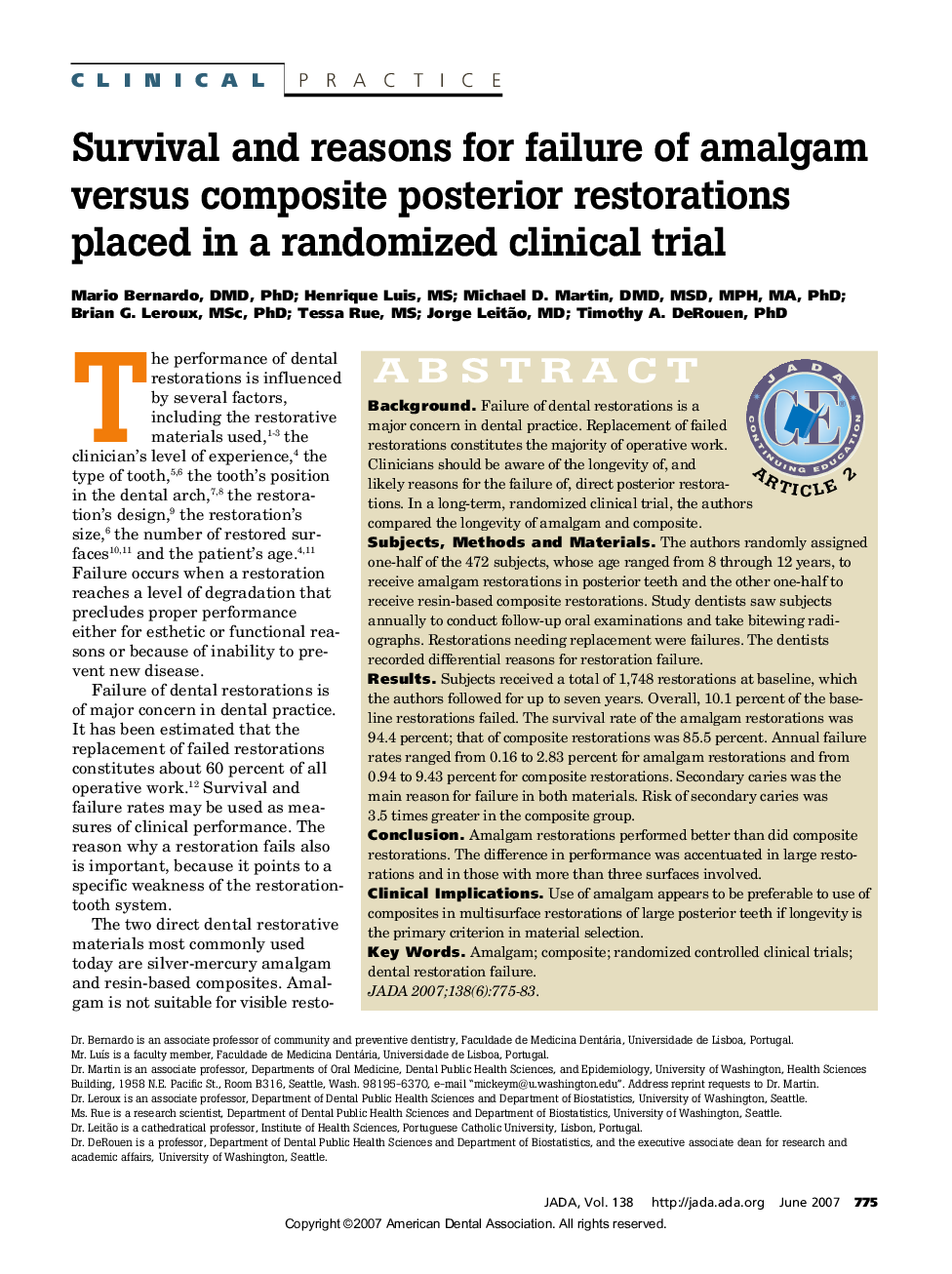| Article ID | Journal | Published Year | Pages | File Type |
|---|---|---|---|---|
| 3140466 | The Journal of the American Dental Association | 2007 | 9 Pages |
ABSTRACT BackgroundFailure of dental restorations is a major concern in dental practice. Replacement of failed restorations constitutes the majority of operative work. Clinicians should be aware of the longevity of, and likely reasons for the failure of, direct posterior restorations. In a long-term, randomized clinical trial, the authors compared the longevity of amalgam and composite.Subjects, Methods and MaterialsThe authors randomly assigned one-half of the 472 subjects, whose age ranged from 8 through 12 years, to receive amalgam restorations in posterior teeth and the other one-half to receive resin-based composite restorations. Study dentists saw subjects annually to conduct follow-up oral examinations and take bitewing radiographs. Restorations needing replacement were failures. The dentists recorded differential reasons for restoration failure.ResultsSubjects received a total of 1,748 restorations at baseline, which the authors followed for up to seven years. Overall, 10.1 percent of the baseline restorations failed. The survival rate of the amalgam restorations was 94.4 percent; that of composite restorations was 85.5 percent. Annual failure rates ranged from 0.16 to 2.83 percent for amalgam restorations and from 0.94 to 9.43 percent for composite restorations. Secondary caries was the main reason for failure in both materials. Risk of secondary caries was 3.5 times greater in the composite group.ConclusionAmalgam restorations performed better than did composite restorations. The difference in performance was accentuated in large restorations and in those with more than three surfaces involved.Clinical ImplicationsUse of amalgam appears to be preferable to use of composites in multisurface restorations of large posterior teeth if longevity is the primary criterion in material selection.
